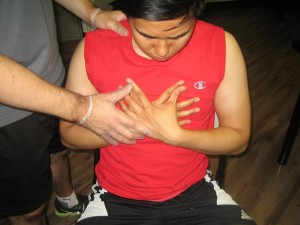Angina is a symptom that usually manifests once the arteries that supply blood to the heart are blocked. Unlike with those who suffer from the traditional forms of angina such as stable angina, those who have microvascular angina do not have blocked arteries but it mimics the symptoms of a stable angina. Based on studies conducted, microvascular angina can occur due to issues with the dilation of the artery during physical activity. Those who develop the symptoms of microvascular angina must consult a doctor for proper assessment and care.
http://youtu.be/3TmUvQJ0hr4
Chest pain
The chest pain is the distinctive symptom linked with microvascular angina. Those affected can develop minor cramping or squeezing feeling at the middle of the chest. In most cases, the chest pain due to microvascular angina is most severe during or right after physical activity such as climbing up stairs.

Sensations of chest pain can last for a few seconds or persist for several hours. Individuals who develop abrupt or severe chest pain must seek medical care right away since this symptom of microvascular angina can indicate a heart attack. It is best that you are prepared to handle chest pain by enrolling in a first aid course today.
Numbness
The unusual sensation of numbness can manifest as a symptom of microvascular angina among those who suffer from this condition. Individuals can develop numbness or tingling sensation that radiates across the shoulders and up to the arms or wrists.
It is important to note that the sensation of numbness can last for several minutes and can make it difficult for the individual to move the affected body part normally. Abrupt numbness particularly if it is localized on only one side of the body should be assessed by a doctor since this symptom of microvascular angina can indicate that a stroke is about to manifest.
Upper body pain
The sensation of pain inside the chest can radiate to other parts of the upper body. Individuals with microvascular angina will develop sharp or burning pain that radiates to the shoulders, jaw, neck, arms or upper back. It is important to note that these indications of microvascular angina can cause discomfort and can occur along with erratic breathing difficulty or profuse sweating.
Always bear in mind that there are certain activities such as crying or eating a large meal that can worsen the upper body pain among those who are suffering from microvascular angina. Those who develop unusual or abrupt upper body pain symptoms might be suffering a heart attack even if they do not develop chest pain symptoms.
If any of these symptoms of microvascular angina are present, it is best to consult a doctor for proper assessment so that timely treatment options can be provided as soon as possible.
